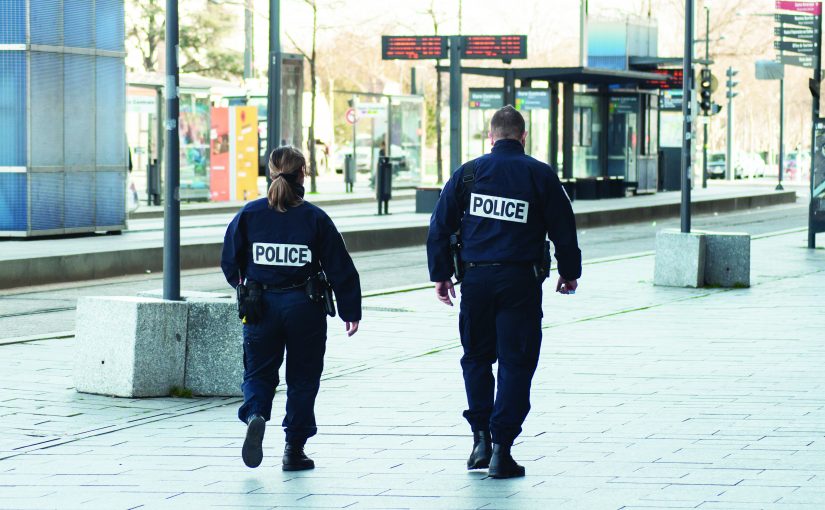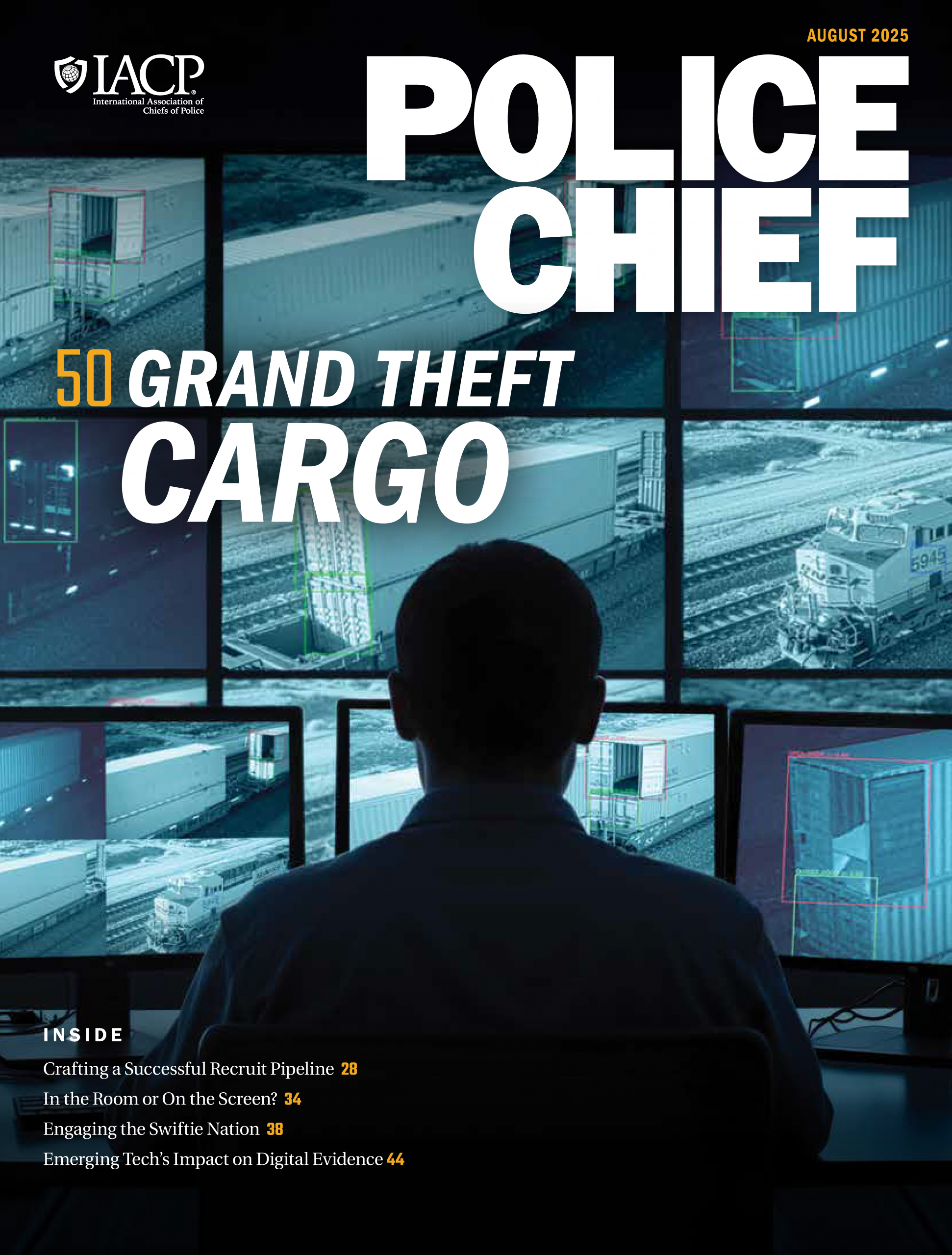The expansive U.S. rail network—long a symbol of economic development and connectivity—is increasingly being exploited for the transportation and distribution of illicit narcotics. Rail transit systems are both vital public resources and vulnerable conduits for narcotics trafficking. The Washington Metropolitan Area Transit Authority (WMATA) has emerged as a central case study, where drug-related activity has risen despite overall crime reductions.
The Backbone of U.S. Rail: Infrastructure and National Importance
The United States operates the world’s largest freight rail system, with nearly 140,000 route miles crisscrossing the country. This infrastructure is crucial for the movement of goods, including coal, agriculture, and chemicals, and is overseen by the Federal Railroad Administration.1 The seven Class I railroads, numerous short-line operators, and a growing network of intermodal hubs form a complex ecosystem that supports the U.S. economy.
Passenger rail, though less dominant, plays a critical role in regional mobility. Amtrak connects more than 500 destinations in 46 states, with the Northeast Corridor serving as the busiest and most developed stretch.2 However, investment in high-speed rail remains limited, with exceptions like California’s high-speed line and Brightline West between Las Vegas and Southern California (Brightline Project).3
In 2023, the federal government invested $2.4 billion into railroad grants for 122 projects across 41 states, targeting safety improvements, bridge and track repairs, and cleaner locomotive technologies.4
The Hidden Cost: Railroads and the Flow of Narcotics
While the size and efficiency of the rail system offer economic benefits, they also present opportunities for misuse. Drug trafficking organizations (DTOs) exploit both freight and passenger rail for the movement of illicit substances. According to the U.S Department of Justice, traffickers use couriers on intercity trains and conceal narcotics in freight shipments. Regions like Michigan and Philadelphia/Camden have documented rail-linked drug movement.5
Rail-based trafficking is difficult to detect due to the vast scope of operations, the anonymity of passengers, and the volume of goods transported. Detection often depends on interagency coordination; field intelligence; and increasingly, data fusion and predictive policing technologies.
The Rise of Synthetic Threats: Fentanyl, BTMPS, and Xylazine
Synthetic drugs remain at the heart of the crisis. Fentanyl continues to dominate street-level narcotics, and its adulteration with novel compounds presents unprecedented risks. The U.S. Drug Enforcement Administration (DEA) reported the emergence of BTMPS bis(2,2,6,6-tetramethyl-4-piperidyl) sebacate, an industrial chemical detected in fentanyl pills seized in over a dozen states. In one case, pills made solely from BTMPS were recovered in San Francisco, raising public health alarms.6
In the Washington, DC–Baltimore, Maryland, region, the High Intensity Drug Trafficking Area (HIDTA) program noted an increase in xylazine-laced fentanyl samples, with xylazine appearing in 7.7 percent of tested Maryland samples in Q3 2024. Overdose fatalities in Washington, DC, decreased by 21 percent during that quarter, but nonfatal overdoses rose 4 percent, indicating greater naloxone accessibility but a sustained user base.7
Policy and Enforcement Evolution
In response to the misuse of transit systems, the U.S. Senate introduced legislation in 2024 to establish a national strategy to stop fentanyl trafficking via transportation networks, including rail. The proposal includes the use of advanced inspection technologies, nonintrusive scanning, and a centralized data system to track narcotics flows.8
Locally, agencies like WMATA and TriMet in Portland. Oregon, have advocated for new laws allowing the criminal prosecution of drug use on public transit. Oregon’s Senate Bill 1553, passed in January 2025, designates public transportation as a “safe zone” with stricter penalties for on-board drug activity.9
WMATA as a Case Study: An Urban Hub Under Pressure
The Metro Transit system, spanning Washington, DC, and its surrounding regions in Maryland and Virginia, has become a focal point for narcotics enforcement. With incidents of drug use and distribution increasingly concentrated at key Metro stations, police agencies are leveraging data, surveillance, and interagency collaboration to address the threat. This case study integrates localized WMATA narcotics case analysis with U.S.-wide trends such as the emergence of synthetic compounds like BTMPS, showing how transit networks are exploited by both small-scale users and transnational cartels.
“As the case of the WMATA demonstrates, transit infrastructure is increasingly being exploited not only for the public consumption of drugs, but also for the distribution and movement of illicit substances.”
The Washington Metropolitan Area Transit Authority (WMATA) provides a striking example of how public rail infrastructure is used for narcotics distribution. Between November 2024 and February 2025, WMATA recorded a notable spike in drug-related arrests and Narcan deployments. According to internal statistics, incidents were concentrated at transfer-heavy stations like Gallery Place, L’Enfant Plaza, Anacostia, and Landover.
Despite a 31 percent drop in Part I crimes and an 18 percent decrease in Part II crimes from 2023 to 2024, drug-related offenses within the WMATA system surged by 53 percent year-over-year.10 The rise in open-air use of opioids and synthetic drugs prompted the Metro Transit Police to launch enhanced enforcement operations, interagency task forces, and undercover initiatives
Mapping the Problem
Geographic information systems (GIS) mapping of narcotics cases between November 24, 2024, and February 25, 2025, reveals significant activity across the Metro system. These data-driven maps highlight narcotics hot spots in downtown DC (notably Gallery Place, Union Station, and L’Enfant Plaza), the eastern and southeastern corridors (Anacostia, Congress Heights), and suburban areas (including Landover, Walker Mill, and Arlington). The spatial density of these incidents underscores how the Metro system serves as both a distribution network and consumption point for narcotics.
The data point to recurring patterns around high-traffic transfer stations where transit routes intersect, enabling transactions onboard trains, in Metro stations, and even on Metrobus routes. This infrastructure, spanning urban and suburban communities, offers anonymity, access, and rapid mobility—making it ideal for illicit activity.
Case Volume and Tactical Trends
The WMATA narcotics data and heat maps show consistent concentrations of incidents related to opioids, methamphetamine, synthetic cannabinoids, and counterfeit pills. Field reports from Metro Transit Police highlight increases in these crimes:
- Onboard and station-based drug use
- Possession with intent to distribute
- Repeat offenses at transfer-heavy locations
These cases prompted a multitiered police response, including undercover operations, enhanced patrols, and the deployment of narcotics detection units. Real-time crime mapping is now a cornerstone of the strategy, allowing proactive adjustments to patrol patterns.
National Context: The BTMPS Threat
Amplifying the urgency of WMATA’s local challenge is the emergence of BTMPS, a chemical previously used in industrial coatings. In late 2024, the DEA identified BTMPS in more than 200 drug seizures across 12 states. In some cases, pills contained only BTMPS, raising significant toxicological red flags. Users reported symptoms ranging from chemical burns to auditory hallucinations.11
This innovation is believed to be the work of Sinaloa Cartel chemists adapting to China’s restrictions on traditional fentanyl precursors. The emergence of BTMPS reflects a broader pattern of synthetic drug evolution, where traffickers exploit gaps in chemical regulations to maintain supply chains.
Police and Public Policy Response
WMATA’s efforts mirror broader U.S. responses aimed at curbing narcotics distribution via transit. Metro Transit Police have launched a multiprong approach, including
- Targeted enforcement at high-volume locations;
- Public awareness campaigns; and
- Partnerships with DEA, local police, and regional HIDTA agencies
Legislative actions are also underway. In Oregon, for example, SB 1553 was passed in January 2025 to criminalize public drug use on transit vehicles. Meanwhile, the U.S. Senate has introduced a bill that targets fentanyl trafficking through all transportation networks, including rail corridors.12
Metro Narcotics Offenses
A recent analysis of data from the 2025 NIBRS Crime Dashboard provides valuable insight into narcotics-related activity within the Metro Transit system, covering jurisdictions in Washington, DC; Maryland; and Virginia. The data captured 42 drug-related incidents across the region, highlighting a mix of public consumption, possession, and suspected distribution within Metro stations and onboard transit vehicles.
The most frequently reported offenses were consumption of marijuana in a public space and possession of a controlled substance in Washington, DC, each with 15 reported cases. In Maryland, six cases involved the possession of marijuana, while Virginia recorded four incidents of possession of controlled substances. Additionally, two cases in DC involved possession with intent to distribute—an indicator of deeper, potentially organized criminal activity within the transit network.
Patterns by jurisdiction revealed distinct enforcement and behavioral trends. In DC, most incidents involved the open use of marijuana on station platforms and train cars, often during peak commuting hours. Maryland’s cases were primarily identified during fare enforcement operations and security sweeps, while Virginia incidents typically stemmed from general patrol activity and reports of suspicious behavior.
Operationally, most arrests occurred during high-volume ridership periods, with body-worn cameras activated in the majority of cases. Notably, several offenders had prior police contact, suggesting repeat behavior or a pattern of transit-based drug activity.
These findings reinforce the strategic value of high-visibility patrols, interagency coordination, and targeted enforcement operations at transit hubs. They also affirm fare enforcement efforts as a critical touchpoint for identifying and intercepting narcotics-related offenses across the Metro system.
A Regional and National Crisis
While WMATA presents a focused case study, similar challenges are being faced by other urban transit systems. In Los Angeles, California, the Metro system reported 22 deaths linked to suspected overdoses in early 2023. In Portland, Oregon, TriMet data showed increased fare evasion and onboard drug use. In Minneapolis, Minnesota, Metro Transit began issuing hundreds of citations for narcotics-related behavior.
The convergence of local and national data highlights a troubling reality: public transit systems are now part of the front line in the U.S. narcotics crisis.
Recommendations for Police Leaders
To counter the growing convergence of rail transit and narcotics trafficking, police leaders are encouraged to implement a series of strategic actions:
Enhance Transit Intelligence Operations: Establish transit-specific intelligence units within departments and integrate GIS mapping with real-time crime tracking. Partner with local hospitals and emergency medical services to monitor overdose hot spots and syndromic trends.
Strengthen Multiagency Coordination and Data Sharing: Formalize joint transit enforcement task forces with transit police, DEA, U.S. Customs and Border Protection, and HIDTA partners. Develop memoranda of understanding to support real-time information sharing and regional case tracking.
Increase High-Visibility and Undercover Policing: Deploy both uniformed and plainclothes officers at high-volume stations. Expand the use of K-9 units and surveillance tools to detect narcotics in trains and buses.
Equip Officers for the Synthetic Drug Crisis: Provide ongoing training on synthetic drug recognition and overdose response. Equip officers with personal protective equipment and naloxone and standardize response protocols for hazardous exposures.
Collaborate with Prosecutors and Legislators: Support legislative efforts to designate transit systems as protected zones and create enhanced penalties for narcotics activity in public transportation settings. Promote diversion programs for users while focusing enforcement on trafficking.
Leverage Technology and Infrastructure Improvements: Advocate for modernized surveillance systems, station lighting, and emergency alert capabilities. Use smart fare systems to flag unusual travel patterns associated with narcotics movement.
Engage the Public and Transit Workers: Launch public campaigns encouraging anonymous reporting of drug activity. Train transit operators and frontline staff to recognize and report signs of trafficking or overdose.
Evaluate and Share Best Practices: Conduct regular reviews of enforcement data and disseminate success stories and failures through national policing networks such as the IACP and Major Cities Chiefs Association.
Conclusion
The convergence of narcotics activity and rail-based transit systems presents a pressing and evolving challenge for policing. As the case of the WMATA demonstrates, transit infrastructure is increasingly being exploited not only for the public consumption of drugs, but also for the distribution and movement of illicit substances. Geographic mapping, statistical case analysis, and firsthand operational data reveal that drug offenses—ranging from marijuana possession to distribution-level incidents—are concentrated at key Metro hubs, particularly in high-traffic transfer zones.
U.S. trends, such as the emergence of synthetic compounds like BTMPS and the use of rail systems by transnational trafficking networks, further elevate the urgency of this issue. These developments show how small-scale transit crime can reflect—and at times, enable—larger, more complex drug supply chains operating across jurisdictions and borders.
The NIBRS Crime Dashboard analysis reinforces these concerns with quantifiable evidence: 42 drug-related incidents across Metro jurisdictions in just one reporting period, including repeat offenses, peak-hour usage, and distribution attempts. These cases validate the need for intelligence-led policing, integrated surveillance, and targeted fare enforcement as tools not just for maintaining order but for interrupting narcotics pipelines at the point of public access.
For police leaders, the path forward demands a layered strategy combining advanced data analytics, proactive patrols, interagency partnerships, and legislative advocacy. By treating transit systems not only as transportation infrastructure but as dynamic environments for public safety intervention, agencies can mitigate the risks posed by narcotics activity and restore community confidence in mass transit.
WMATA’s experience offers a replicable model—and a timely warning—for transit systems across the United States and in other countries around the globe. d
Notes:
1U.S. Department of Transportation (DOT), Federal Railroad Administration (FRA), “About FRA.”
2Amtrack, “Amtrack Facts.”
3Brightline West, “Project Overview.
4DOT, FRA, “Investing in America: Biden-Harris Administration Announces $2.4 Billion in New Rail Projects to Improve Safety, Strengthen Supply Chains and Grow America’s Freight and Passenger Rail Networks,” press release, October 29, 2024.
5Executive Office of the President, Office of National Drug Control Policy, High Intensity Drug Trafficking Areas Program: 2023 Report to Congress.
6Emily Alpert Reyes, “An Industrial Chemical Is Showing Up in Fentanyl in the U.S., Troubling Scientists,” Los Angeles Times, September 16, 2024.
7Paul Kiefer, “Maryland Lawmakers Target Tranquilizers Behind Recent Overdose Deaths,” Maryland Matters, March 14, 2025.
8Stop Smuggling Illicit Synthetic Drugs on U.S. Transportation Networks Act of 2024, S. 5285, 118th Congress (2024).
9Roberta Altstadt, “TriMet, Law Enforcement Partners Welcome Changes to Make Transit a Drug-Free Zone,” TriMet News, January 7, 2025.
10Tom Roussey, “Newly Released Data Shows Crime Is Down on the Metro System,” ABC7 News, November 19, 2024.
11Justin Lum, “DEA Phoenix: Industrial Chemical Keeps Showing Up in Fentanyl Supply, Raising New Concerns,” Fox 10 Phoenix, November 26, 2024.
12Stop Smuggling Illicit Synthetic Drugs on U.S. Transportation Networks Act of 2024.
Please cite as
Daniel Alvarez “The Troubling Drug-Transit Convergence,” Police Chief Online, July 9, 2025.



